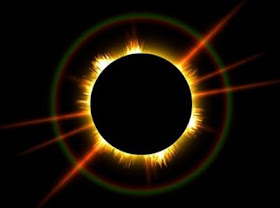The first annular solar eclipse visible in the United States in nearly 18 years will occur on Sunday, May 20. But before you buy tinted safety glasses or start making your pinhole projector (never look at the sun with the naked eye!), you should know: When it comes to viewing the solar eclipse in the US, only those lucky folks who are west of the Mississippi River will be able to see a partially-eclipsed sun, according to NASA.
An annular eclipse is when the moon covers up most of the sun except for the sun's outer fringe, leaving visible a ring of fire, or "annulus," which is Latin for ring.
A total eclipse, by contrast, blocks so much sunlight that the ground is cast in an eerie midday twilight a far more breathtaking experience.
 |
| May 20 2012 Solar Eclipse / Lunar Eclipse / Epistaxis / Marie Curie |
 |
| May 20 2012 Solar Eclipse / Lunar Eclipse / Epistaxis / Marie Curie |
 |
| May 20 2012 Solar Eclipse / Lunar Eclipse / Epistaxis / Marie Curie |
 |
| May 20 2012 Solar Eclipse / Lunar Eclipse / Epistaxis / Marie Curie |
 |
| May 20 2012 Solar Eclipse / Lunar Eclipse / Epistaxis / Marie Curie |
An annular eclipse is when the moon covers up most of the sun except for the sun's outer fringe, leaving visible a ring of fire, or "annulus," which is Latin for ring.
A total eclipse, by contrast, blocks so much sunlight that the ground is cast in an eerie midday twilight a far more breathtaking experience.
 |
| May 20 2012 Solar Eclipse / Lunar Eclipse / Epistaxis / Marie Curie |
